Introduction: Understanding Cavities and Their Impact on Oral Health
Cavities, also known as dental caries or tooth decay, are one of the most common dental problems worldwide. They occur when the enamel of your teeth breaks down due to the acids produced by bacteria that feed on sugars in your mouth. If left untreated, cavities can lead to severe tooth damage, infection, and even tooth loss. Fortunately, recognizing the early symptoms of cavities and taking preventive measures can significantly reduce the risk of developing them.
In this article, we will discuss the early symptoms of cavities, effective prevention strategies, and how to treat cavities before they become a more significant issue.
1. Early Symptoms of Cavities: How to Recognize Tooth Decay Early
In the initial stages, cavities may not be very noticeable. However, as the decay progresses, certain symptoms may start to emerge. Recognizing these early signs can help you take prompt action to prevent further damage.
Early Symptoms of Cavities:
- Tooth Sensitivity
- Description: Sensitivity to hot, cold, or sweet foods and drinks is one of the earliest signs of tooth decay. If you experience pain or discomfort when consuming these items, it could indicate that the enamel on your teeth is starting to erode.
- What It Means: This sensitivity occurs because the enamel, which acts as a protective layer, is weakened, exposing the sensitive dentin underneath.
- Visible Holes or Pits in Your Teeth
- Description: As cavities begin to form, small holes or pits may appear on the surface of your teeth. These may be more noticeable in the back teeth (molars) where food particles often get trapped.
- What It Means: The presence of visible holes or pits means that the decay has progressed beyond the initial demineralization stage, and the enamel has been compromised.
- Tooth Discoloration
- Description: Dark spots or stains on your teeth, especially near the gumline, can indicate the presence of cavities. These stains may start as white or yellow spots, gradually turning darker as the decay worsens.
- What It Means: Tooth discoloration occurs when the enamel is demineralized by acids, making the affected areas more prone to staining.
- Persistent Tooth Pain or Aching
- Description: When a cavity reaches deeper layers of the tooth, you may experience persistent tooth pain, especially when chewing or biting down.
- What It Means: This pain is a sign that the decay has reached the inner pulp of the tooth, where nerves are located. It is often a clear indication that the cavity needs professional dental treatment.
- Bad Breath or Unpleasant Taste
- Description: Cavities can sometimes lead to a buildup of bacteria that produces an unpleasant odor or taste in your mouth.
- What It Means: Persistent bad breath (halitosis) or an unusual taste could be a sign of infection or advanced decay.
2. How Cavities Form: The Process Behind Tooth Decay
Cavities begin when plaque, a sticky film of bacteria and food particles, forms on your teeth. The bacteria in plaque feed on sugars and starches from food and produce acids that gradually break down tooth enamel. The process of tooth decay occurs in stages:
- Demineralization: Acid attacks the enamel, causing mineral loss and making the tooth surface weak. This stage may not cause noticeable symptoms.
- Enamel Erosion: If plaque remains on the teeth for an extended period, the enamel starts to erode, and the tooth becomes more vulnerable to cavities.
- Formation of Cavities: Once the enamel is compromised, bacteria can reach the inner layers of the tooth, leading to the formation of cavities or holes.
- Advanced Decay: If untreated, the decay can spread deeper into the tooth, affecting the pulp and causing pain, infection, and possibly tooth loss.
3. Effective Prevention Strategies for Cavities
Prevention is the best way to avoid the pain and cost associated with cavities. With a combination of good oral hygiene, dietary changes, and regular dental visits, you can significantly reduce the risk of developing cavities.
Preventive Measures:
- Brush Your Teeth Regularly
- How It Helps: Brushing your teeth at least twice a day with fluoride toothpaste helps remove plaque and bacteria. Fluoride strengthens the enamel and can help remineralize areas that are starting to decay.
- Best Practice: Use a soft-bristled toothbrush and brush for at least two minutes, ensuring you reach all surfaces of your teeth, including the back molars.
- Floss Daily
- How It Helps: Flossing removes food particles and plaque between the teeth and along the gumline, areas that a toothbrush may miss. This helps prevent plaque buildup and reduces the chances of cavities forming between teeth.
- Best Practice: Floss at least once a day, gently sliding the floss between each tooth and curving it around the sides of each tooth to remove debris.
- Limit Sugar and Acidic Foods
- How It Helps: The bacteria in your mouth feed on sugars and starches, producing acids that can erode enamel. Limiting sugary and acidic foods, such as candy, soda, and citrus fruits, reduces the fuel for these harmful bacteria.
- Best Practice: Opt for a balanced diet rich in fiber, dairy products, and non-acidic fruits and vegetables. Drink plenty of water to help wash away food particles and bacteria.
- Use Fluoride Products
- How It Helps: Fluoride is a mineral that strengthens tooth enamel and helps prevent cavities. It can also reverse early signs of decay by remineralizing weakened enamel.
- Best Practice: Use fluoride toothpaste, and consider fluoride treatments or mouth rinses, especially if you’re at a higher risk for cavities.
- Get Regular Dental Checkups
- How It Helps: Regular dental exams help detect cavities and other oral health issues early, even before symptoms appear. Professional cleanings remove plaque buildup that can lead to cavities.
- Best Practice: Visit your dentist at least twice a year for checkups and professional cleanings. This allows your dentist to monitor your oral health and catch any issues early.
- Consider Dental Sealants
- How It Helps: Dental sealants are thin, protective coatings applied to the chewing surfaces of the back teeth (molars) to prevent bacteria and food particles from getting trapped in the grooves.
- Best Practice: Ask your dentist about sealants, especially if you have deep grooves in your molars or if you’re at a higher risk for cavities.
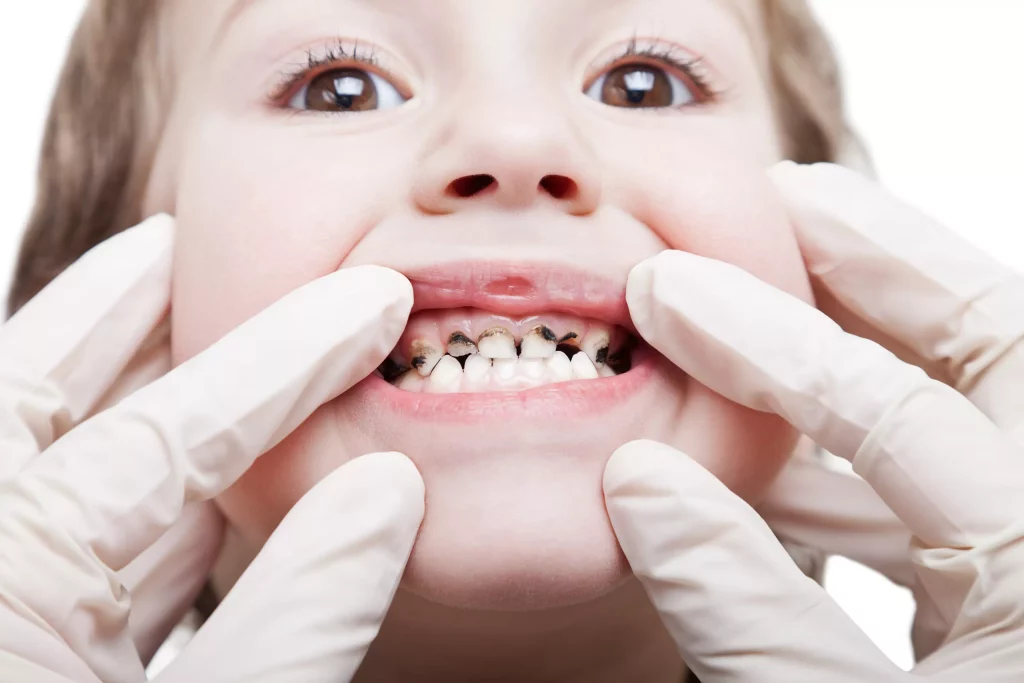
4. Treatment for Cavities: From Fillings to Root Canals
If a cavity does form despite your preventive efforts, early intervention can help save your tooth and prevent more extensive damage. The type of treatment required depends on the severity of the cavity.
Treatment Options:
- Fillings
- When It’s Needed: If the cavity is small and has only affected the enamel, your dentist will likely recommend a filling. This is a simple procedure where the decayed part of the tooth is removed, and the cavity is filled with a durable material, such as amalgam or composite resin.
- Outcome: The tooth is restored to its original function, and the filling prevents further decay.
- Crowns
- When It’s Needed: For larger cavities that affect the structure of the tooth, a crown (cap) may be necessary. The decayed portion of the tooth is removed, and a custom-made crown is placed over the remaining tooth.
- Outcome: Crowns protect the tooth from further damage and restore its function.
- Root Canal
- When It’s Needed: If the cavity reaches the tooth’s pulp (the innermost part of the tooth that contains nerves and blood vessels), a root canal may be required. This involves removing the infected pulp, cleaning the root canals, and sealing the tooth.
- Outcome: The tooth is saved, but it may require a crown afterward to provide additional strength and protection.
- Tooth Extraction
- When It’s Needed: In extreme cases where the cavity has caused severe decay and infection that cannot be treated, the tooth may need to be extracted.
- Outcome: The removal of the tooth prevents the infection from spreading to other parts of the mouth, but it may require a dental implant or bridge to restore the smile.
Conclusion: The Key to Maintaining Healthy Teeth
Cavities are preventable with good oral hygiene, a balanced diet, and regular dental visits. Recognizing the early symptoms of cavities, such as tooth sensitivity, discoloration, or visible holes, allows for prompt treatment, preventing more serious dental issues down the line.
By following a few simple steps—brushing and flossing daily, limiting sugary foods, and scheduling regular dental checkups—you can protect your teeth from decay and maintain a healthy, beautiful smile for life. If you do experience symptoms of cavities, don’t hesitate to consult your dentist for early intervention and treatment.

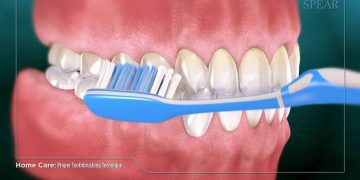
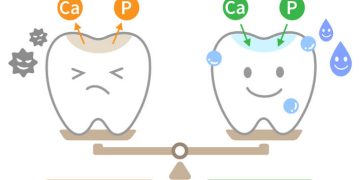
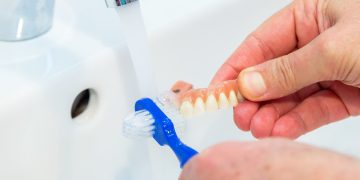




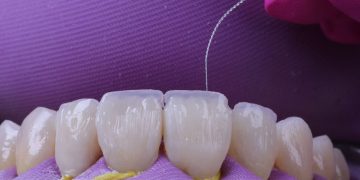
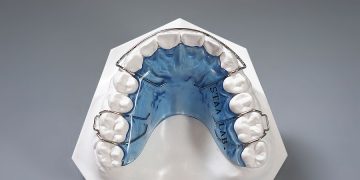

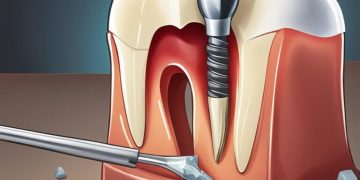



















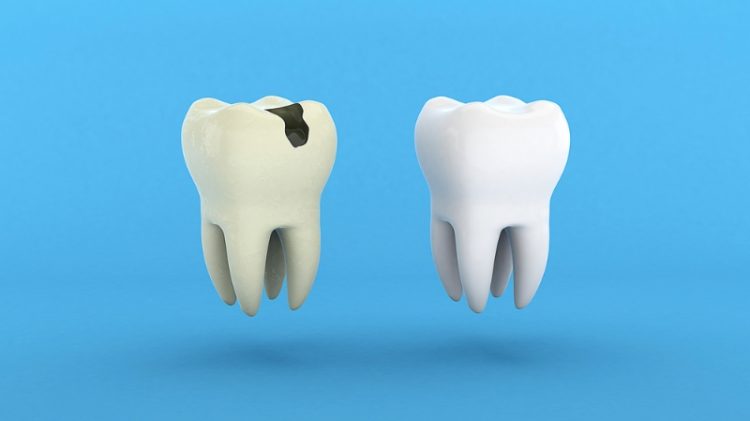













Discussion about this post